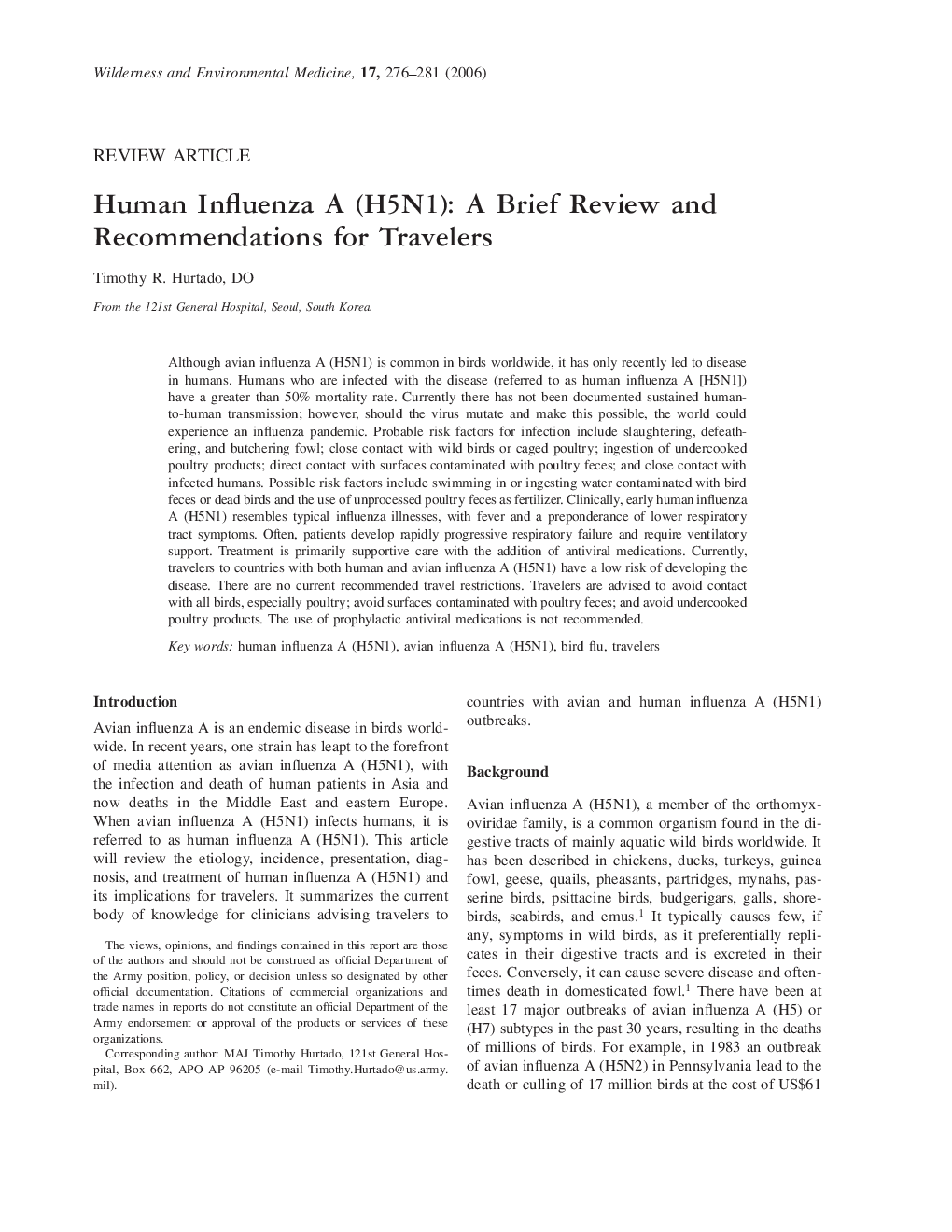| کد مقاله | کد نشریه | سال انتشار | مقاله انگلیسی | نسخه تمام متن |
|---|---|---|---|---|
| 2614672 | 1135030 | 2006 | 6 صفحه PDF | دانلود رایگان |

Although avian influenza A (H5N1) is common in birds worldwide, it has only recently led to disease in humans. Humans who are infected with the disease (referred to as human influenza A [H5N1]) have a greater than 50% mortality rate. Currently there has not been documented sustained human-to-human transmission; however, should the virus mutate and make this possible, the world could experience an influenza pandemic. Probable risk factors for infection include slaughtering, defeathering, and butchering fowl; close contact with wild birds or caged poultry; ingestion of undercooked poultry products; direct contact with surfaces contaminated with poultry feces; and close contact with infected humans. Possible risk factors include swimming in or ingesting water contaminated with bird feces or dead birds and the use of unprocessed poultry feces as fertilizer. Clinically, early human influenza A (H5N1) resembles typical influenza illnesses, with fever and a preponderance of lower respiratory tract symptoms. Often, patients develop rapidly progressive respiratory failure and require ventilatory support. Treatment is primarily supportive care with the addition of antiviral medications. Currently, travelers to countries with both human and avian influenza A (H5N1) have a low risk of developing the disease. There are no current recommended travel restrictions. Travelers are advised to avoid contact with all birds, especially poultry; avoid surfaces contaminated with poultry feces; and avoid undercooked poultry products. The use of prophylactic antiviral medications is not recommended.
Journal: Wilderness & Environmental Medicine - Volume 17, Issue 4, December 2006, Pages 276–281